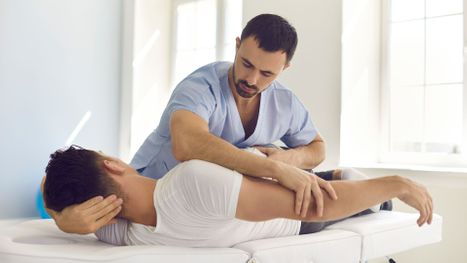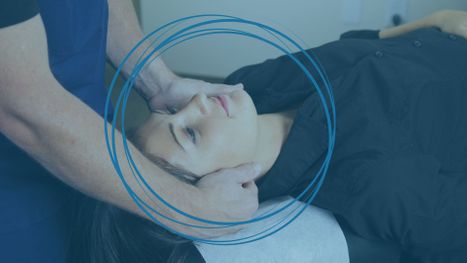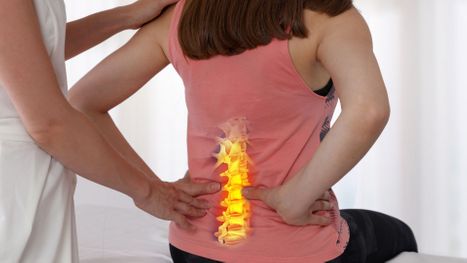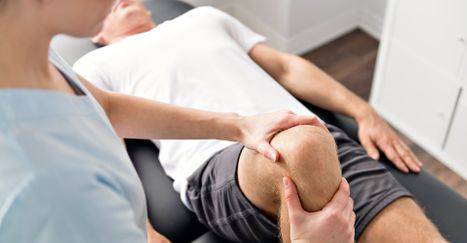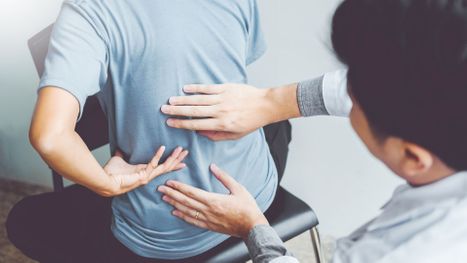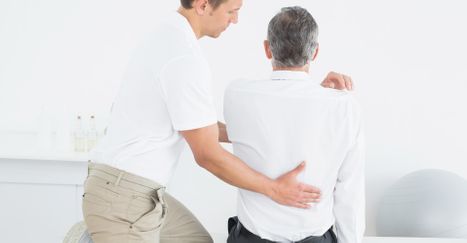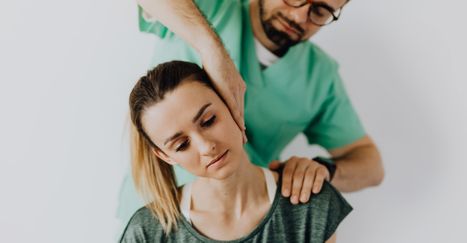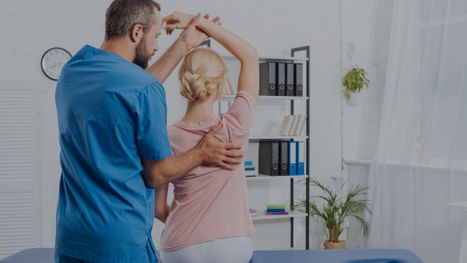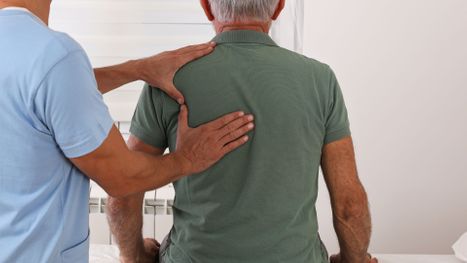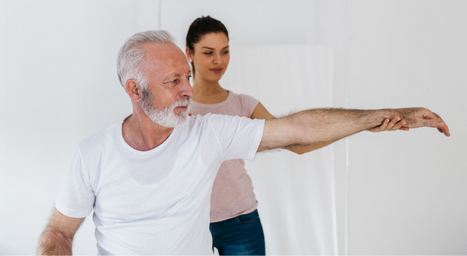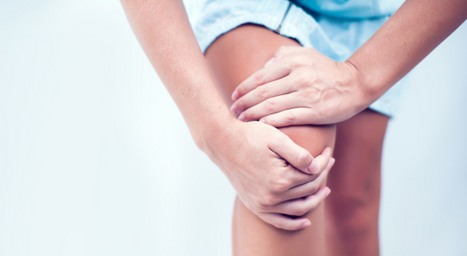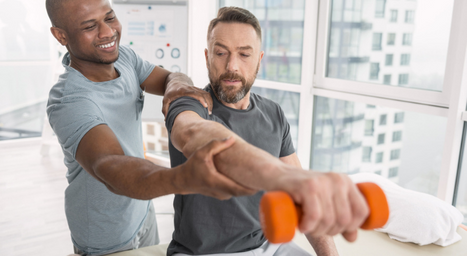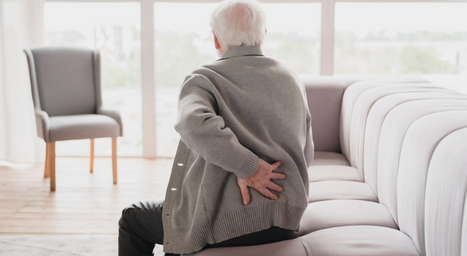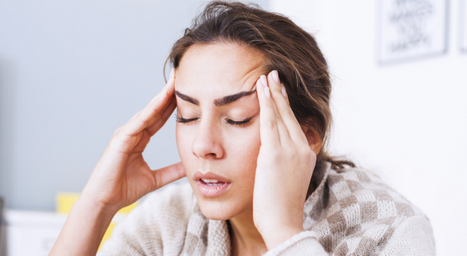Blog
Back Pain: Alleviating Discomfort with Chiropractic Care
Back pain is a common ailment affecting millions of individuals each year. Whether caused by an injury, poor posture, or a sedentary lifestyle, it can significantly impact daily life. At Chirocare, our experienced chiropractor, Dr. Stone, employs chiropractic adjustments within a complete care chiropractic approach to provide relief and restore function for our patients suffering from back pain.
moreAuto Accident Injury
Auto accidents can leave individuals with various injuries, from minor to severe. Chiropractic care can play a crucial role in the recovery process. At Chirocare, Dr. Stone and his dedicated team focus on providing complete care chiropractic solutions to help patients regain their well-being after an accident. Here, we’ll explore how chiropractic adjustments can alleviate pain and improve mobility following an auto accident.
moreCan You See a Chiropractor Even If You're Not Injured?
You don’t have to be injured to benefit from chiropractic care. At Chirocare Chiropractic, we’re here to support your overall health and wellness, not just manage pain or address injuries. Many patients in North Greenbush come to us for proactive care and maintenance, reaping a wide range of benefits. Here’s how regular chiropractic visits can enhance your well-being even if you’re not in pain.
more4 Reasons to See a Chiropractor in North Greenbush
If you’re experiencing discomfort, pain, or just looking to enhance your overall wellness, visiting a chiropractor can make a significant difference. At Chirocare Chiropractic in North Greenbush, we specialize in providing personalized, family chiropractic care to address a wide range of needs. Here are four key reasons why seeing a chiropractor could be the best choice for you and your family.
moreCan Chiropractic Care Help with Pain After an Accident?
Dealing with pain after an accident can be a challenging and overwhelming experience. From back pain to neck pain, and even muscle tightness, finding relief is essential for a full recovery. This is where complete care chiropractic can play a vital role in restoring your health and well-being. In this blog, we will explore how chiropractic care can help alleviate pain after an accident and why ChiroCare in Rensselaer is the team for the job!
moreHow Can a Chiropractor Help with Back Pain?
Are you tired of living with constant back pain? Seeking relief from medications that only provide temporary relief? Look no further than Chirocare Chiropractic, a trusted and comprehensive care chiropractic clinic located in North Greenbush, NY. In this blog post, we will explore how a chiropractor can help alleviate your back pain through a chiropractic back adjustment.
moreHow Chiropractic Care Can Benefit Athletes
As an athlete, your body is your most valuable asset, and taking care of it is crucial for performance and longevity. One effective way to optimize your athletic endeavors is through chiropractic care. Chirocare Chiropractic in North Greenbush, NY, offers comprehensive chiropractic solutions to address the unique needs of athletes. Read on to learn how chiropractic care benefits athletes, and contact us today to get started with our services!
moreHow To Enjoy a Pain-Free Summer With Chiropractic Care
Summer is a fantastic time to get active and enjoy the great outdoors, but doing so is difficult when you’re dealing with chronic pain. Whether you’re struggling with a sore back, a pinched nerve, or any other kind of physical limitation, Chirocare Chiropractic is here to help. With our chiropractic care services in North Greenbush, NY, you can enjoy all that summer has to offer without the burden of pain. Here’s how!
moreMy Sciatica is Hurting, What Should I Do?
Sciatica is a common condition that affects millions of people worldwide. If you feel a sharp, shooting pain in your lower back that radiates down your leg, you may be experiencing sciatica. But the good news is that you are not alone, and there are treatments available to help you feel better. At Chirocare Chiropractic in North Greenbush, NY, we know how debilitating sciatica can be, and we are here to help you feel better. Contact us today to schedule an appointment.
moreI Recently Had a Car Accident, Should I See a Chiropractor?
Car accidents can be a traumatic experience that can cause physical and emotional pain. Even if you don't feel any immediate pain, it's important to seek medical attention to make sure there are no underlying injuries. One of the best healthcare professionals to visit after a car accident is a chiropractor. At Chirocare, PC, we specialize in treating injuries caused by car accidents and can help you recover quickly and safely.
more4 Tips to Help with Back Pain
Back pain can be debilitating, affecting your ability to perform even the simplest of tasks. At Chirocare, PC, we understand how frustrating and painful it can be to live with back pain. Fortunately, there are several ways to manage and alleviate back pain. Here are four tips to help you feel better.
moreWhat is Corrective Chiropractic Care?
Have you ever heard the saying “Give a man a fish and he will eat for a day. Teach a man how to fish, and you feed him for a lifetime?” At ChiroCare, the best chiropractor in Rensselaer, New York, we apply this saying to body alignment and overall wellness by offering corrective chiropractic care. Instead of offering quick adjustments so you feel better for a day, we aim to teach your body how to align itself so you can feel better for a lifetime.
moreMyths About Chiropractic Care
Chiropractic care is a form of alternative medicine that can enhance a person’s overall health and wellness. Despite its many benefits, there are still a number of myths and misconceptions surrounding this form of healthcare. At ChiroCare in Rensselaer, New York, we believe education is the best way to spread the benefits of chiropractic care. Allow us to debunk some common myths!
moreWhat is a Spinal Adjustment?
Chiropractic adjustments, also known as spinal adjustments or spinal manipulation, are performed by a chiropractor to restore proper joint motion and decrease nerve pain. These adjustments are usually made manually by the chiropractor's hands, but sometimes chiropractors use small instruments to apply force to a misaligned joint. Chiropractictors, like those at Chirocare Chiropractic, are here to provide a safe, non-invasive approach to treating spine and joint problems, and spine adjustments are a crucial component of their treatment.
more4 Benefits of a Chiropractic Adjustment
Chiropractic adjustments have been used for centuries to help people achieve better health and wellness. As more people are becoming aware of the benefits of chiropractic care, chiropractic adjustments are becoming more popular.
ChiroCare believes that chiropractic care can help improve your health and wellness and help reduce the chance of you having pain and illness in the first place. Here are four benefits of chiropractic adjustments, and contact our chiropractic clinic in Rensselaer today.
moreHow Dr. Stone Can Help With Sports Injuries
Sports injuries can be incredibly frustrating. Not only do they sideline you from the sport you love, but they can also take a toll on your body both in the short and long run. If you are looking for a chiropractor who can help with sports injuries, look no further than Dr. Stone at ChiroCare! Our team is experienced in providing you with exceptional chiropractic care to get you back in the game. Learn more and get in touch with us in North Greenbush today!
moreWhat Can Dr. Stone Do For You?
If you’re searching for chiropractic care, Chirocare Chiropractic is the place to go! With 32 years of experience, Dr. Stone can help you with all of your general chiropractic care needs including back pain, recovery after an auto accident, avoiding surgery when possible, and spine adjustments!
more4 Ways A Chiropractor Can Help
Whether you have been in an accident or are suffering from unexplained muscle pain, chiropractic care might be able to provide the solution or healing you are looking for. At ChiroCare in New York, we specialize in providing you with chiropractic care services that encourage overall wellness in your life. If you are wondering if a chiropractor can help with your overall health, continue reading to find out how we can help!
moreA Chiropractor’s Role in Reducing Inflammation
How Chiropractic Treatment Reduces Inflammation
Chronic inflammation has a harmful effect on your body and increases your risk of many types of health conditions. Whether you already have a disease or condition or want to avoid getting sick in the future, regular visits to the chiropractor will help you keep inflammation under control.
Why Inflammation Happens
Inflammation is one of the ways your body protects itself when you're injured or sick. The inflammatory process can make you feel a little uncomfortable but helps you heal and reduces your risk of infection.
If you have a cut, sprained ankle, or another injury, you may notice redness, swelling, and pain due to inflammation. As your injury heals, the inflammation gradually goes away. If you've been sick, inflammation also subsides as you begin to get better.
Unfortunately, inflammation can become a chronic problem in some cases. The problem can happen if your immune system reacts too strongly to germs or mistakenly attacks healthy tissues because it believes there is a threat to your health. In some cases, chronic inflammation can occur for no apparent reason.
You may be more likely to develop inflammation if you're stressed, don't get enough sleep, smoke, drink too much alcohol, are overweight or obese, don't eat a healthy diet, have a chronic illness, or autoimmune disorder.
moreChronic Conditions That Can be Improved with Chiropractic
Treat Your Chronic Conditions with Chiropractic Care
Back and neck pain relief isn't the only benefit of visiting the chiropractor. Chiropractic treatment also offers an effective way to treat many chronic conditions that can affect your health or cause chronic pain. These conditions are among the many ailments that your chiropractor treats.
Frequent Headaches and Migraines
Chiropractic care offers an alternative to over-the-counter and prescription medications used to treat headaches and migraines. If you're worried about the long-term health consequences of taking over-the-counter drugs or prescription medications that make you feel nauseated and tired, chiropractic treatment offers a better solution. Treatment not only eases your pain but can also reduce the number of headaches you get every month.
Asthma
Problems with the alignment of your spine could be making your asthma symptoms worse. Vertebrae, the small bones that make up your spine, can become misaligned due to injuries, stress, poor lifting, improper exercise techniques, or even poor posture. Ligaments, muscles, and tendons often become stiff and tight due to spinal misalignments, a problem chiropractors call "subluxations."
moreThe Benefits of Chiropractic for Chronic Pain Caused by PTSD
Chiropractic Can Ease Chronic Pain Related to Post-Traumatic Stress Disorder
Chronic pain, one of the lesser-known symptoms of post-traumatic stress disorder (PTSD), can make living with the condition even more difficult. Fortunately, your chiropractor can help you manage your PTSD pain.
How PTSD Causes Chronic Pain
Can you remember the last time you truly felt relaxed? Flashbacks, nightmares, and negative thoughts can trigger near-constant stress and anxiety. Unfortunately, both stress and anxiety can be factors in pain.
When you're stressed, your muscles tend to tighten, particularly those in your head, neck, shoulder, and back. In fact, your chronic back pain could actually be caused by your PTSD. In a study conducted on male twins, researchers discovered that men who had PTSD were more likely to have chronic back pain than their twins. The research appeared in the September 1, 2019 issue of Spine.
Tight muscles can also be to blame for frequent tension headaches and migraines. Constant muscle tension may eventually cause painful knots that never seem to go away. Pain from knots can travel to other parts of the body. Although a knot might be located in a muscle in your upper back, you may actually feel pain in your shoulder and arm.
moreChiropractic Care and Your Nervous System
Protecting Your Nervous System with Chiropractic Care
Your nervous system controls every part of your body. It's the reason that your heart beats in a normal rhythm and your limbs move the way they do. When the nervous system doesn't function as it should, you're more likely to develop a variety of problems, ranging from gastrointestinal issues to frequent illnesses to troubles with balance and coordination.
Fortunately, regular visits to your chiropractor can help improve the way your nervous system works and enhance your physical and mental health.
How Your Chiropractor Helps You Care for Your Nervous System
Your nervous system is made up of your brain, spinal column, and the nerves that branch out from the spinal column. A problem with any one of these structures can affect your health.
Subluxations are a common cause of nervous system issues. They occur when one or more of the vertebrae that make up your spine becomes misaligned, Subluxations can press on nerves, interfering with the transfer of signals from the brain to various parts of your body.
Your chiropractor uses spinal manipulation to reduce pressure on the nerves and realign your vertebrae. The therapy involves quick thrusts to the spine that move the vertebrae back into position. Spinal manipulation offers a simple, effective way to improve nervous system functioning and relieve pain and inflammation.
moreUnderstanding How the Spine Works
A Guide to the Functionality of Your Spine
The movements we take for granted wouldn't be possible without a healthy spine. Thanks to your strong backbone, you can jump over a puddle, bend to pick up your dropped keys, or twist to reach your lunch in the backseat of your car.
The Parts of the Spine and What They Do
The spine is made up of small bones called the vertebrae that protect the spinal cord, support your body and help you move easily. Each vertebra contains a rounded section, known as the vertebral body, and finger-like projections called processes. The muscles in your back are attached to these processes with bands of connective tissues called tendons. Ligaments connect the vertebrae together and help keep your spine stable when you move.
The spinal cord, a thick bundle of nerve fibers that transmit impulses from the brain, passes through a hollow area in the middle of the vertebra. These impulses keep your organs and immune system functioning properly, tell your muscles to contract when you move, and control breathing and other bodily functions. Nerves branch out from the spinal cord and travel to the various parts of your body.
moreImprove Your Recovery Time With Chiropractic Treatment
How Chiropractic Treatment Can Help with Recovery Time
Pain, stiffness, and other symptoms often continue for days or weeks after an injury, even if the injury was fairly minor. Chiropractic care can shorten your recovery period and help you to return to your normal activities much sooner.
Ways Chiropractic Treatment Speeds Up Recovery
Let's say your back or neck begins to hurt soon after you lift a heavy box or spend 12 hours in the car during a road trip. After resting for days or weeks, you're still in pain, plus your joints have become stiff and inflexible.
Whether your pain is caused by a strained muscle, misaligned vertebrae in your spine, scar tissue, or another problem, chiropractic treatment offers a simple, drug-free solution.
Some of your pain may be due to subluxations. Subluxations happen when the vertebrae in your spine move out of alignment. Misaligned vertebrae can be caused by injuries, but may also occur due to poor posture or even the stress and strain of sitting in the same position for hours.
Subluxations not only cause pain but may also affect your muscles, ligaments, and tendons, causing them to tighten or become inflamed. In addition to treating back and neck pain, chiropractors also offer natural treatments for sprained ankles, shoulder injuries, leg, and arm pain, sciatica, tennis elbow, carpal tunnel syndrome, plantar fasciitis, text neck, and other conditions.
moreHow Stretching Can Improve Your Health
The Health Benefits of Stretching
Do you greet the morning with a satisfying stretch? Stretching loosens your muscles after a long night in bed and helps you feel alert and ready to face the day. But, if you only stretch first thing in the morning, you may be missing out on the many benefits stretching offers.
9 Reasons You Should Stretch More
Adding a few short stretching sessions to your day is a simple way to stay fit and healthy. When you stretch regularly, you'll enjoy these benefits:
- Less Back Pain. You may be at risk of developing back pain even if your job doesn't require anything more strenuous than sitting at a desk. Remaining in the same position most of the day can lead to back pain, particularly if the muscles in your thighs or pelvis become too tight and pull on your back. Stretching every day is a simple way to reduce or prevent an aching back.
- Straighter Posture. Slouching when you sit or stand increases tension on your muscles, joints, tendons, and ligaments, causing headaches, along with aches and pains. If your muscles and ligaments become too tight, they can even cause misalignments in the vertebrae in your spine.
- Better Range of Motion and Flexibility. Flexibility declines as you get older, as does your ability to move your joints through their full range of motion. Luckily, stretching can help you keep your muscles and joints loose and limber.
- Fewer Injuries. You're more likely to get hurt if you happen to fall when your muscles and joints are tight. If you play sports, warming up with a few stretches before you start the activity will reduce your risk of torn or strained muscles, bursitis, tendonitis, and other injuries.
- Improved Balance. Your balance also tends to get worse with age. If you're more flexible, you'll be able to better keep your balance and avoid dangerous falls. Balance time improved by 11.4% for participants who performed 30 minutes of stretching exercises in a study published in the Journal of Strength and Conditioning Research.
- No More Aches and Pains. Aches and pains are an unavoidable part of life, but stretching may make them a little easier to handle. Stretching your legs, arms, back, hips, and neck can work out kinks and soothe your sore muscles.
- Less Stress. Increased muscle tension, one of the uncomfortable symptoms of stress, can cause headaches and restrict your range of motion. Stretching can help relieve some of the tightness and may help you feel more relaxed.
- Better Circulation. Oxygen and nutrients reach your body's cells via your bloodstream. If your circulation is sluggish, your health can suffer. Luckily, stretching gets your blood flowing and helps you stay healthier.
- Reduced Risk of Certain Diseases. Stretching could help you avoid heart disease, stroke, diabetes, and other serious health problems. Researchers at the University of Milan discovered that improving circulation with leg stretches could prevent the arteries from stiffening and help keep them open.
Causes and Treatments of Muscle Spasms
Will Chiropractic Treatment Stop Your Muscle Spasms?
Do you often experience back spasms, Charley horses, or other types of muscle spasms? Although occasional spasms may not be a cause for concern, painful muscle cramps can disrupt your life if they become a regular occurrence. Luckily, your chiropractor can find out why you keep getting muscle spasms and offer treatments that will relieve your pain.
What Causes Muscle Spasms?
Every time you move, your muscles contract or tighten, then relax again. Spasms occur when a muscle tightens involuntarily and remains stuck in the contraction phase for seconds or minutes. If you touch your muscle in the middle of a severe spasm, you may notice that it feels hard. Mild spasms may only cause twitching sensations in the muscle and are much less painful. Spasms can affect any muscle but are most common in the calf, thigh, back, hand, arm, foot, abdominal, and rib muscles.
Muscle spasms can be caused by:
- Dehydration: Dehydration occurs due to a decrease in the amount of fluid in your body. When you're dehydrated, your body reroutes available fluids to your heart and other crucial organs. As a result, your muscles don't receive the fluids they need and begin to cramp. Dehydration can be caused by a strenuous workout, high temperatures or humidity, not drinking enough, diarrhea, or excessive sweating.
- Overuse: You're more likely to experience spasms when your muscles are tired. This can happen when you're playing sports, painting your house, or removing snow from your driveway.
- Inactivity: Did your spasms start after you decided you needed more exercise? Your muscles may be more likely to cramp if you begin a vigorous fitness routine after weeks or months of inactivity.
- Poor Posture: Slouching or spending too much time in one position can strain your muscles. When muscles are strained, any movement can cause a spasm. In fact, bending down to reach a dropped pen could trigger painful spasms in your back or shoulder.
- Subluxations: Subluxations occur when the vertebrae, the small bones that make up your spine, become misaligned. When this happens, the muscles attached to the vertebrae tighten, making them more likely to spasm.
- Medication Side Effects: Some medications can increase your risk of muscle spasms. Drugs that may cause cramps include those used to treat high blood pressure, heart disease, high cholesterol, Alzheimer's disease, myasthenia gravis, osteoporosis, and Parkinson's disease, according to WebMD.
- Getting Older: Your muscles become smaller as you age. When you move, the muscles must work harder, which increases your risk of spasms.
- Other Causes: Muscle spasms can also be caused by poor circulation, pinched nerves, pregnancy, herniated discs, hypothyroidism, kidney or liver disease, or low calcium, potassium, and magnesium levels.
What Chiropractic Care Can Do for Older Patients
Chiropractic Care Offers Important Benefits for Older People
Staying fit and healthy becomes more challenging as you get older. Joints begin to ache as a result of years of wear and tear, while reduced muscle mass can lead to balance problems. Fortunately, chiropractic care can help you address age-related aging changes and protect your health.
Tired of Living with Pain? Chiropractic Treatment Offers an All-Natural Solution
As your muscle mass shrinks, your tendons and ligaments become stiffer, increasing your risk of strains, sprains, and muscle spasms. At the same time, you may be dealing with pain and inflammation in your joints due to osteoarthritis or rheumatoid arthritis. You may also be struggling with a herniated disc or neck or back pain.
In many cases, joint or muscle pain can be caused or worsened by misaligned vertebrae in your spine. Spinal misalignments stress your joints, trigger pain, and may increase inflammation and pressure on muscles, nerves, ligaments, and tendons. Spinal manipulations, commonly called adjustments, realign your spine and ease tension on your soft tissues and nerves, decreasing pain. Your chiropractor uses hands-on pressure or a small activating device to move your vertebrae back into their normal positions.
moreWhy an Inactive Lifestyle Isn’t Good For You
Could Your Sedentary Lifestyle Be Harming Your Health?
If walking around the grocery store is the most exercise you get in a week, you may be putting your health at risk. Inactivity is a factor in many health conditions, ranging from cancer to high blood pressure to osteoporosis. Fortunately, it's never too late to improve your health by becoming more active.
Are You a Couch Potato? You May Be More Likely To Experience These Health Issues
Only 25% of Americans are active enough to satisfy current exercise recommendations, according to the Centers for Disease Control and Prevention (CDC). Adults should participate in 150 minutes of moderate-intensity activity or 75 minutes of vigorous-intensity activity per week, according to the recommendations.
Lack of exercise can increase your risk of:
- Cardiovascular Problems. You're more likely to develop heart disease, heart attack, stroke, high blood pressure, or high cholesterol if you don't move enough. In fact, a sedentary lifestyle doubles your risk of cardiovascular disease and death, according to the World Health Organization. Regular aerobic exercise strengthens your heart and improves blood flow to the brain, heart, lungs, and other organs. Aerobic exercise is any activity that raises your heart rate, such as swimming, walking, riding a bike, or playing tennis.
- Obesity. Exercise helps you burn calories and improves your metabolism, the rate at which you burn those calories. If you've been struggling to lose weight, exercising more, in addition to following a healthy diet, could help you shed a few extra pounds.
- Type 2 Diabetes. Inactivity may also increase your likelihood of developing type 2 diabetes, a disease that affects more than 34 million Americans, according to the CDC. If you're sedentary, you may develop insulin resistance, a condition that affects your body's ability to use glucose (blood sugar) to provide energy to your cells. Glucose builds up in your blood if you're insulin resistant, making it more likely that you'll develop pre-diabetes or diabetes. Researchers in Korea discovered being inactive for 10 hours or more daily increased insulin resistance values in people who didn't have diabetes.
- Weak Bones. Weight-bearing activities, like walking, strength training, dancing, or running, keep your bones strong. These activities increase bone density and improve the range of motion in your joints. Weight-bearing exercise is particularly important as you get older. Exercise can help you lower your risk of developing osteoporosis, a disease that weakens the bones and increases your risk of fractures.
- Cancer. Skipping exercise can also raise your cancer risk. Inactivity raises the risk of uterine, colon, and breast cancers, according to Medline Plus.
- Mental Health Issues. Staying active may also help you avoid depression and anxiety or reduce the symptoms of these conditions. Exercise improves nerve cell growth in the part of the brain that controls moods and triggers the release of endorphins, natural chemicals that improve your mood, according to Harvard Health Publishing.
- Joint and Muscle Pain. Without regular exercise, your joints and muscles may become stiff and painful. Does your job involve plenty of sitting? When you sit too much, the core muscles that support your back begin to weaken. When the muscles are weak, you're more likely to experience strained muscles, muscle spasms, and knots in your muscles. Muscle imbalances due to lack of exercise can pull your spine out of alignment, causing chronic back pain and reduced range of motion.
Enjoy the Health Benefits of Massage Therapy and Chiropractic
How Massage Therapy and Chiropractic Work Together for a Healthier You
Is massage therapy part of your chiropractic treatment plan? Combining massages with chiropractic treatment enhances the effects of the treatments and may even help you reduce your risk of illness.
7 Benefits of Mixing Chiropractic and Massage Therapy
When you receive a massage before or after your chiropractic treatments, you'll enjoy these advantages:
1. Increased Flexibility. Problems with flexibility, stiffness, and reduced range of motion can be caused by subluxation, a process that occurs when the vertebrae in your spine become misaligned. Subluxations increase pressure on the muscles, joints, and ligaments in your back and can cause imbalances throughout your entire body. Although spinal manipulation treatment realigns the vertebrae in your spine, your muscles and tissues may remain tight even after the adjustment. Loosening muscles and tissues with massage therapy make it easier to move without stiffness. It also breaks apart scar tissue that can restrict joint movement.
2. Pain Relief. Have you ever wondered why you feel so good when you leave the chiropractic office? Chiropractic treatments flood your body with endorphins, chemicals that improve your mood and relieve pain naturally and effectively. Both massage therapy and chiropractic treatments trigger the release of these chemicals. Thanks to your treatments, you may be able to reduce the amount of pain medication you take or even stop taking painkillers completely.
moreHow to Strengthen Your Joints
4 Tips to Help You Strengthen Your Joints
Are your joints as strong as they could be? Joint weakness can lead to a variety of problems ranging from injuries to pain to stiffness. Making a few changes in your life, in addition to visiting the chiropractor on a regular basis, will help you keep your joints strong and flexible.
The Consequences of Weak Joints
Falls, arthritis, wear and tear, poor muscle tone, and even posture issues can cause weak joints. Unfortunately, once a joint is weak, you're more likely to develop injuries, including dislocations, fractures, strained muscles, and sprains. Weak joints may also affect your balance and increase your risk of falls. Fortunately, improving your joint health can be as simple as exercising more often, changing your diet, or losing weight.
1. Make Exercise a Priority
Exercise keeps joints limber, improves blood flow, and strengthens the muscles that support your joints. When your muscles are strong, you're less likely to injure yourself or suffer from joint pain. Your exercise routine should include:
- Aerobic Exercise. Aerobic exercise is any type of exercise that increases your heart rate, including running, walking, dancing, aerobics, skiing, swimming, riding a bike, or playing sports. This type of exercise keeps your muscles, tendons, ligaments, and joints strong and flexible and lowers your risk of heart disease, high blood pressure, and high cholesterol. If you have arthritis or another joint condition, high-impact activity, like running, tennis, or high-impact aerobics, could worsen your symptoms. Walking, swimming, riding a stationary bicycle, or performing low-impact aerobics are better choices.
- Strengthening Exercises. Strengthening exercises improve balance, flexibility, coordination, and bone strength and density, in addition to increasing and strengthening muscle mass. Exercises can be performed using weights, resistance bands, or weight machines. Push-ups, lunges, squats, planks, and other types of resistance exercises also strengthen bones and muscles.
- Stretching. Start and end every exercise session with a 5 to 10-minute stretching session. Stretching increases blood flow to muscles and tissues, improves flexibility, and keeps your muscles loose after you finish your workout.
What Are Neck Spasms and Why Do They Occur?
What You Need to Know About Neck Spasms
When a neck spasm hits, even the slightest movement can cause intense pain. Although the spasms are usually short-lived, they can become a chronic problem in some cases. If you suffer from frequent neck spasms, understanding the cause can help you avoid future bouts of pain.
Why Neck Spasms Happen
Have you ever turned your head quickly and felt a tight, painful sensation in your neck? The pain occurs when the muscles in your neck spasm or tighten unexpectedly. Spasms can last several minutes or linger for days or weeks. Chronic or frequent spasms can cause pain and headaches that interfere with your usual activities. Even if the spasm goes away quickly, you may still experience pain due to sore muscles.
Neck pain and spasms are common problems for many of us. In fact, 20 to 70 percent of Americans will experience neck pain that interferes with their usual activities at some point in their lives, according to Practical Pain Management.
Neck Spasms can be caused by:
- Poor Posture. Slouching strains your neck, shoulders, and upper back muscles, increasing your risk of spasms. In addition to spasms, you may also develop headaches due to poor posture.
- Using Digital Devices. Looking downward to use smartphones, tablets, and other digital devices can cause a condition called tech neck. Holding your head in a downward position stresses the muscles in your neck, triggering spasms. Eventually, tech neck can cause spinal misalignments, early-onset arthritis, and muscle or nerve damage.
- Holding Your Head in an Uncomfortable Position. Spasms can be a problem if you're a mechanic, plumber, or work in another type of job that requires you to twist or turn your head.
- Stress. Stress can tighten the neck, shoulder, and upper back muscles, causing spasms.
- Your Sleep Habits. Sleeping on a pillow or mattress that doesn't adequately support your body may mean that you wake up with an aching neck.
- Sprain or Strain. An injury to the muscles or ligaments in your neck could also be to blame for your spasms.
Why Movement is Important for Healing Injuries
How Moving Helps Your Injuries Heal
Although taking it easy might seem like the best strategy after an injury, spending too much time on the couch may be a bad idea. In fact, inactivity could actually make your symptoms worse and prolong your recovery time. Movement triggers your body's natural healing response and reduces your risk of chronic pain.
The Benefits of Moving
When you injure yourself, your body immediately activates its self-repair function. White blood cells flood the injured area and begin repairing the damaged tissues and cells. Increased blood flow causes inflammation and is the reason that you may notice swelling, stiffness, or redness around your injury.
At this point, rest is a priority. Resting gives your body the time it needs to begin the healing process, but too much rest can slow healing, increase stiffness, and other symptoms.
In most cases, you can begin moving one to two days after your injury, depending on the type and severity of the injury. While it's not a good idea to participate in high-impact or vigorous activity, gentle exercises and stretches can be an important part of the healing process.
moreThe Benefits of Chiropractic Treatment for Older Patients
Chiropractic Treatment Can Protect Your Health as You Grow Older
No matter how carefully you care for your body, chances are it won't function quite as well at 70 as it did at 30. Wear and tear on your joints and weakening muscles may lead to poor balance and coordination, while digestive problems, insomnia, and other issues can affect your quality of life. Fortunately, chiropractic treatment offers a simple solution to these and other age-related issues.
Chiropractic Treatment Relieves Pain Naturally
Playing tennis, participating in hobbies, gardening, or playing with your grandchildren become difficult when your joints and muscles hurt. Pain medication dulls the ache but only temporarily. Relying on medication can lead to addiction issues or increase your risk of stomach ulcers.
Chiropractic treatment offers an effective way to ease pain and decrease your reliance on medication. Spinal manipulation, massage, soft tissue manipulation, and other treatments relieve pain and inflammation and increase flexibility and range of motion. Chiropractic therapies help your body manage pain naturally by triggering the release of endorphins. These chemicals relieve pain and stress while improving our mood.
moreWorking from Home and Chiropractic Care: How to Stay Healthy
Working from Home? Chiropractic Care Can Help You Stay Healthy
Working from home has become the new way of life for many Americans. In fact, more than 25% of professional jobs will likely become remote by the end of 2022, according to job search site Ladders. While remote work offers many benefits, it can increase your risk of joint and muscle pain. Have your aches and pains worsened since you began working from home? Your chiropractor offers treatments that will ease your pain and stiffness and help you avoid chronic pain.
How Working from Home Can Cause Pain
Although it's true you can work anywhere, you may soon find yourself regretting your decision to make the couch or kitchen table your new workstation. The couch may be a comfortable spot to watch a movie or game, but it isn't designed to adequately support your body while you work. Spending hours hunched over your laptop or slouching on the couch causes posture changes that affect the alignment of the vertebrae in your spine.
Subluxations, the word chiropractors used to describe spinal misalignments, are a common cause of neck, back and joint pain. Misalignments also increase tension on your muscles, ligaments and tendons, causing muscle pain, soreness, stiffness, spasms and reduced range of motion. If a subluxation affects your neck, you may develop painful headaches that make it difficult to concentrate on your work.
moreSelf Care for Chronic Pain: Do's and Do Not's
Self Care Do's and Don'ts for Chronic Pain
As a chronic pain sufferer, you've probably discovered a few strategies that make your pain more bearable. Unfortunately, some of these practices could actually be worsening your symptoms. In addition to visiting your chiropractor regularly, following these do's and don'ts will help you manage your pain.
Do Bring on the Heat
Heat, whether from a heating pad, hot tub, or warm bath or shower, offers an effective way to ease muscle pain. Tight muscles and tissues loosen when they're warm. Heat also increases blood flow, reduces stiffness and relieves stress.
Don't Overdo It
It's not easy to change your habits if you're used to working long hours or running marathons every month. Unfortunately, things have to change when you develop chronic pain. Sitting at work for hours strains your joints and cause your muscles and tissues to tighten. Ignoring pain when you exercise can lead to painful flare-ups or even worsen your condition.
Frequent stretching breaks during the day will reduce pain and keep muscles and tissues loose and flexible. Chronic pain doesn't have to prevent you from exercising, but it may mean that you need to choose forms of exercise that are easier on the joints, like walking, swimming or riding a stationary bicycle.
moreHow to Avoid and Treat Tension Headaches
How to Avoid and Treat Tension Headaches
Popping pain relievers temporarily dulls the pain and pressure of tension headaches, but the relief is short-lived. As soon as the medication wears off, your headache pain returns. Fortunately, lifestyle changes and chiropractic treatment can end your reliance on pain medication and reduce the number of tension headaches you get.
Tension Headache Symptoms and Causes
Tension headache pain starts in your forehead and wraps around the back of the neck. Also known as "hatband" headaches, tension headaches are the most common type of headache disorder, according to the World Health Organization.
Pain and pressure aren't the only symptoms of the headaches. After a few hours of pain, the muscles in your neck, shoulders and jaw tighten or spasm, which only worsens the headache. Fatigue, irritability and sensitivity to light can also occur.
Tension headaches have many causes, including:
- Stress. Stress, a common cause of tension headaches, tightens the muscles in your head, neck and shoulders, triggering headache pain. Your stress level affects how much pain you feel and the length of your headache, according to a study published in Middle East Current Psychiatry in 2020. As your stress level rises, tension headaches become more intense and last longer.
- Posture. Slouching or holding your head too far forward or at an angle may also increase your risk of tension headaches. Text neck, a condition that's related to the use of digital devices, can also lead to tension headaches. Bending your head down to look at your phone or digital device exerts excessive pressure on your neck, spine, muscles, ligaments and tendons, causing tension headaches and neck pain.
- Subluxations. Subluxations are misalignments of the vertebrae in your spine. The misalignments can be caused by poor posture, falls, playing sports, the way you sleep or even your habit of crossing your legs. Subluxations cause pain by pressing on nerves and also trigger imbalances that tighten muscles and tissues.
- Jaw or Teeth Issues. Your frequent headaches may be caused by temporomandibular joint dysfunction (TMJ), a misaligned jaw or a problem with your bite (the way your upper and lower teeth fit together). If your jaw or teeth aren't properly aligned, the muscles in your face and neck may tighten painfully.
How Posture Affects Your Health
How Posture Affects Your Health
Could your health issues be related to your posture? Poor posture not only causes back pain but may be the reason for several other health problems and conditions.
Why Good Posture Is So Important
Your bones support your weight and keep your body properly aligned and balanced. If you slouch or contort your body while you sleep or work, you're bound to experience problems with your joints, muscles, tendons, ligaments or even organs eventually.
No one has perfect posture all the time. Although occasional bad posture probably won't cause health issues, you may be more likely to notice a difference in your health if poor posture is a frequent problem.
Shortness of Breath Could Be Related to Poor Posture
Do you struggle to take a deep breath? Although asthma, chronic obstructive pulmonary disease (COPD), pneumonia, lung cancer and other conditions can cause shortness of breath, poor posture could also be to blame.
Breathing issues are more common in people who hunch over when they work, watch TV, or use their laptops or smartphones. As you hunch over, you round your shoulders and hold your head forward. These positions tighten the chest muscles that help you breathe and make it harder for the diaphragm to expand fully. (The diaphragm is a large, dome-shaped muscle under your lungs. Every time you inhale and exhale, the diaphragm contracts and expands.)
moreTips for Avoiding Yard Work Pain and Injury
Avoid Yard Work Pain and Injuries with These Tips
Do you dread the aches and pains you know you'll face after working in your yard during the weekend? Pulling weeds, pruning your rose bushes, or mowing your lawn may not seem like strenuous chores, but yard work activities are a common cause of stiffness and achy muscles and joints. Following a few of these tips will help you avoid injuries and pain the next time yard work is on your schedule.
Keep Moving
The longer you remain in one position, the more likely you are to experience stiff joints and tight, painful muscles. Change your position at least every 20 to 30 minutes. If you've been on your feet trimming overhead tree branches, switch to a seated activity for a half-hour before tackling the branches again.
Stretch It Out
Stretching is important whether you're going for a run, playing softball, or working in the garden. When you stretch before you tackle your latest yard work project, you'll:
- Improve blood flow to your limbs
- Keep your joints and muscles loose and flexible
- Ease tight muscles
Failing to stretch could mean that your muscles will tighten while you work, limiting your range of motion. When muscles can't extend fully, you're more likely to experience muscle damage, strains, and painful joints.
moreChiropractic Tips for Healthier Travel
Traveling Soon? These Chiropractic Tips Will Help Make Your Trip Pain-Free
After spending hours in a car or plane, muscles and joints become stiff and sore, making pain an unfortunate consequence of traveling for many people. If you usually spend the first day or two of your trip in pain, these tips will help you avoid travel-related discomfort.
Take Breaks
Your body wasn't designed to endure hours of sitting. Remaining in one position for too long affects your posture and may strain your joints, muscles, tendons, and ligaments. Frequent breaks reduce stress on bones and tissues and may help you avoid post-trip pain. If you're traveling by car, stop every hour for brief stretching breaks. If you can't stop frequently, schedule rest stops at least every few hours.
Traveling by train or plane? Although frequent rest stops won't be possible, you can keep your body loose and limber by taking a few laps up and down the aisles every hour.
Stretch It Out
Stretching before, during and after your trip works out the kinks, relaxes your muscles, and increases blood flow to your muscles and joints, helping you avoid neck and back pain.
moreWelcome
Welcome to our site! We are in the process of building our blog page and will have many interesting articles to share in the coming months. Please stay tuned to this page for information to come. And if you have any questions about our business or want to reach out to us, we would love for you to stop by our contact page.
Thank you!
more
